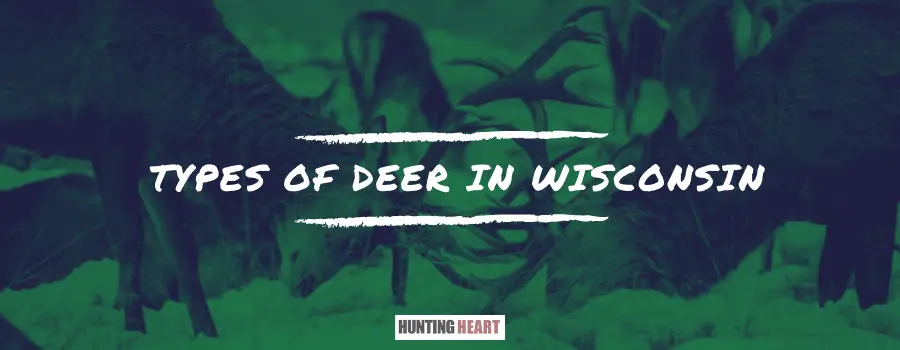As an Amazon Associate I earn from qualifying purchases.
Our Associate portal can be found here
Wisconsin is a place open to both hunters, scientists, researchers, and people who love seeing and learning about deer. It is estimated that the deer population in Wisconsin is around 1.8 million. The next question would be, what are the types of deer in Wisconsin? Wisconsin is home to various types of deer that include, but not limited to:
- White deer
- Black-tailed deer
- White-tailed deer
White Deer in Wisconsin
Boulder Junction is the home for most of the white deer, and you will find more albino deer in this place than in any other place in Wisconsin. These animals are rare to find, and there are strict laws that are aimed to protect them. Sources estimate that in every 20,000 deer born, one is a white deer. There are two types of white deer
Albino
These are white deer that lack all the pigments. Pink eyes and noses identify them though some may have light blue eyes.
Leucite Deer
They are white deer whose eyes are brown. The white deer’s coloring is due to genetic makeup, but different genes create the patterns.
Black-tailed Deer in Wisconsin
It is believed that black-tailed is a species though recent authorities maintain that they are a mule deer’s subspecies. Compared to the mule deer, the black tail is smaller and darker in color. The tail is triangular and has a black top or dark brown and is the whitish underside. The male weighs 55-150kg while the female weighs 43-90kg.
White-tailed Deer
One of the most common deer you will see almost in every state is the white-tailed deer when you visit Wisconsin. They have an impeccable shape that can never go unnoticeable. The name was adopted back in 1957 by four students from the Jefferson elementary school who discovered that the animal had no official status in Wisconsin. Chapter 147 of the law of 1957 saw the animal get designated as the state “wildlife animal.”
In 1957, there was a disagreement for adopting the badger as the state animal, but this received an equal share of rejection from northern Wisconsin residents. Therefore there was an introduction of legislation to adopt the term whitetail deer. The legislature noted that the white-tailed was common in the north of Wisconsin. Due to the white deer’s attractiveness and significant economic value, the legislature decided the white deer be used as a state wildlife animal.
The white-tailed deer is large and is mostly found in areas where they can get food and get covered. This is the reason why they prefer living in crop fields and near the forest. Various names are used to refer to white-tailed deer. They include jumping deer: this is a name given due to its behavior, common deer, among other names. You will likely hear people use different names when referring to the whitetail deer.
Characteristics of the Whitetail Deer
Habitat
They are strong, and their bodies allow them to survive under different habitats; however, whitetail deer’s ideal habitat is dense thickets, for it is easier to hide and move. Whitetails can stay in several terrestrial habitats from the big northern woods to the deep sawgrass hammock. They also inhabit desolate areas and bushy areas such as the cactus and the thorn brush deserts.
Behavior and Survival Tactics
The animals are known for being shy and also being nervous. When they are startled, and when fleeing, they characteristically wave their tails from side to side. They are also good swimmers, and they enter large water bodies when they are fleeing from the predators or when they are visiting islands.
When running away from predators, whitetail deer can jump very high fences and run very fast; while jumping, their legs resemble a spring. White-tailed deer can run to a speed of 30 miles per second, and this characteristic makes them known to be too swift.
During heavy snow, whitetail deer don’t migrate to winter but rather yard up to their territories. Interestingly, they are known to use the same route when foraging but will never bed in their previously used area.
Whitetails are not social animals and especially during the summer season. The only whitetails that you see walking and grazing together are the female and her fawns. Female fawns follow their mothers for at least two years, but the male ones leave them the first year.
During September, the males start rutting to attract a mate. They usually fight each other, crashing the antlers in an attempt to gain access to a female. To protect their young ones from predators, females don’t go with the fawn for forage. Instead, they leave them in dense vegetation for as much as four hours at a time.
Feeding Habit
Whitetail deer feed on what vegetation is available in their habitat. They will consume twigs of maple, sassafras, buds as well as shrubs. They usually feed before dawn and late afternoon until dusk.
Reproduction
Though there have been cases where the female whitetail deer mating as young as when they are seven months, most of them mate in their second year. The bucks are polygamous, although they may form an attachment and stay with a single doe for some days or weeks until the female reaches estrus, the bucks are polygamous.
When is Deer Hunting Season in Wisconsin?
In 2020, the deer hunting season in Wisconsin will run from September 12, 2020, to January 31, 2021, depending on the type of weapon used.
Conclusion
There is no secret that Wisconsin is one place hunters find best for deer hunting. Those who have ventured in Wisconsin’s woods deer hunting, the gorgeous fall color every hunting season have been storied environments for deer hunters of all kinds who go out with hopes of deer harvest.
It is also good to know that if you want to know the deer’s age, the indicator is the snout’s length and the coat’s color. The older deer tend to have a relatively longer snout and grayer coat.
Amazon and the Amazon logo are trademarks of Amazon.com, Inc, or its affiliates.

36 years old, been hunting and fishing my entire life – love the outdoors, family, and all kinds of hunting and fishing! I have spent thousands of hours hunting hogs and training hunting dogs, but I’m always learning new stuff and really happy to be sharing them with you! hit me up with an email in the contact form if you have any questions.



